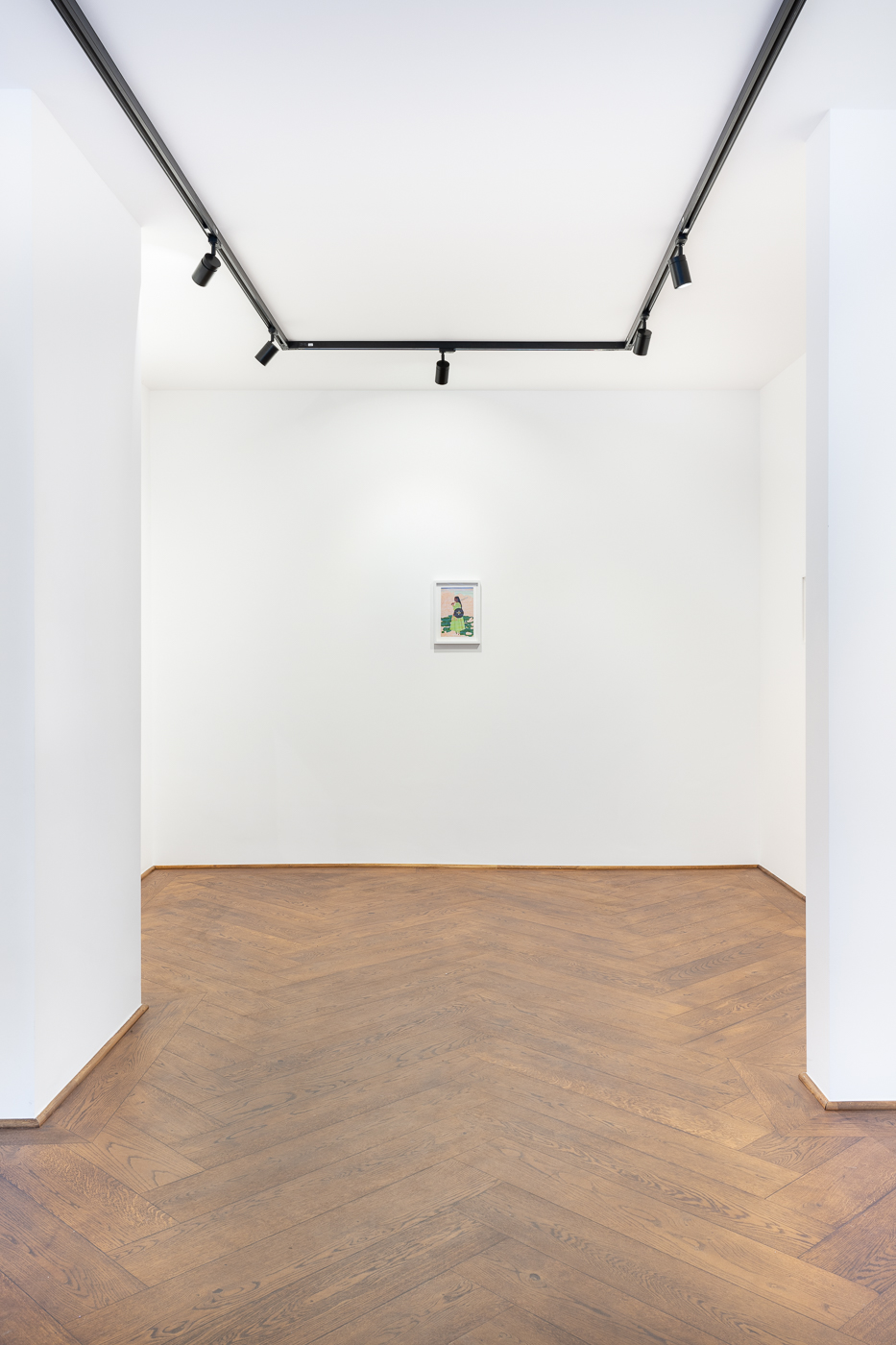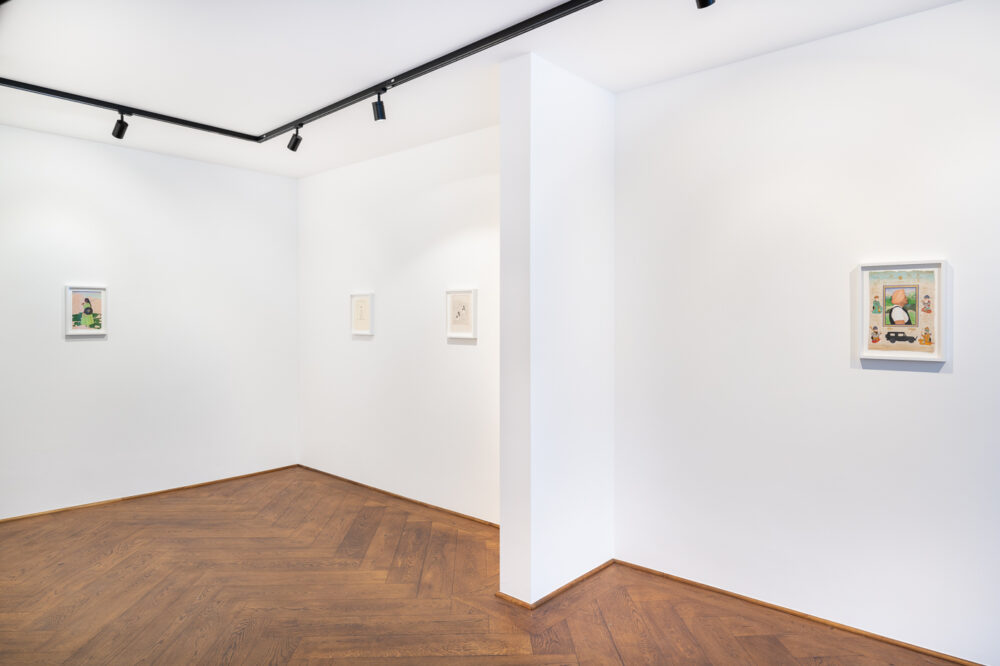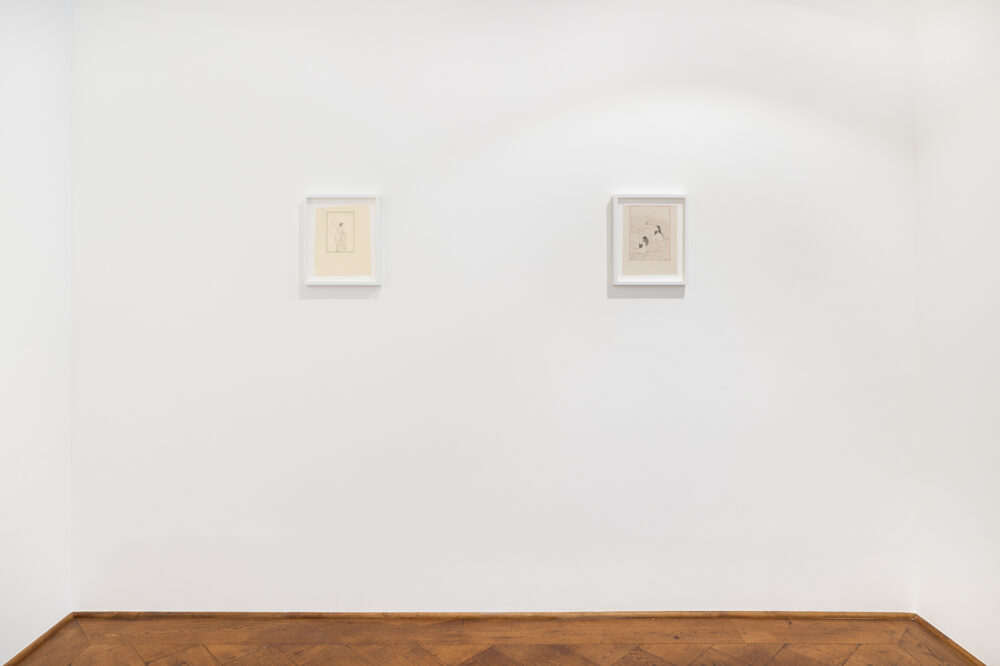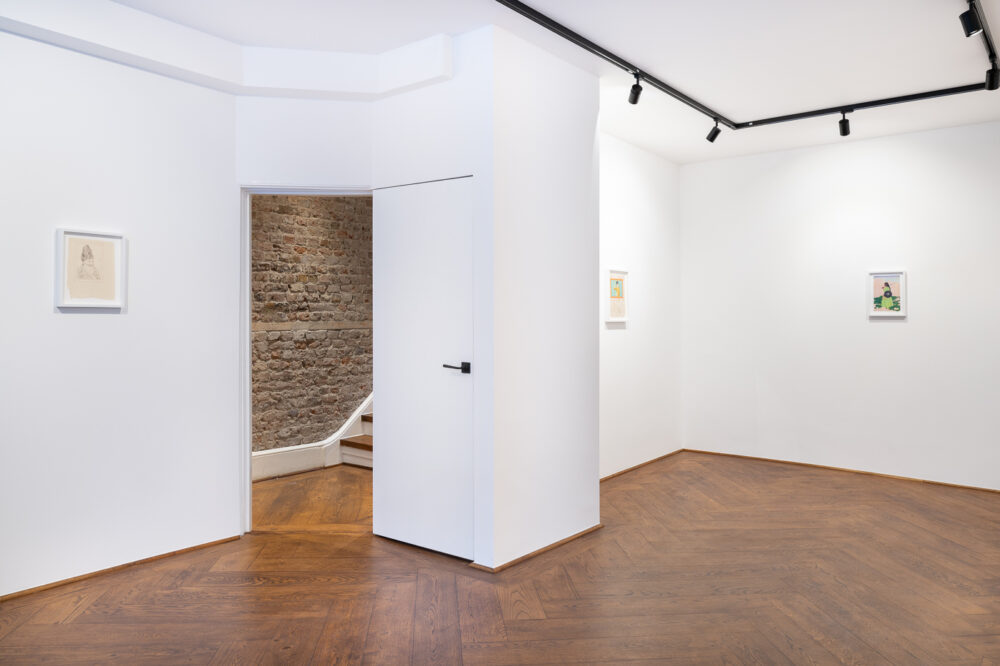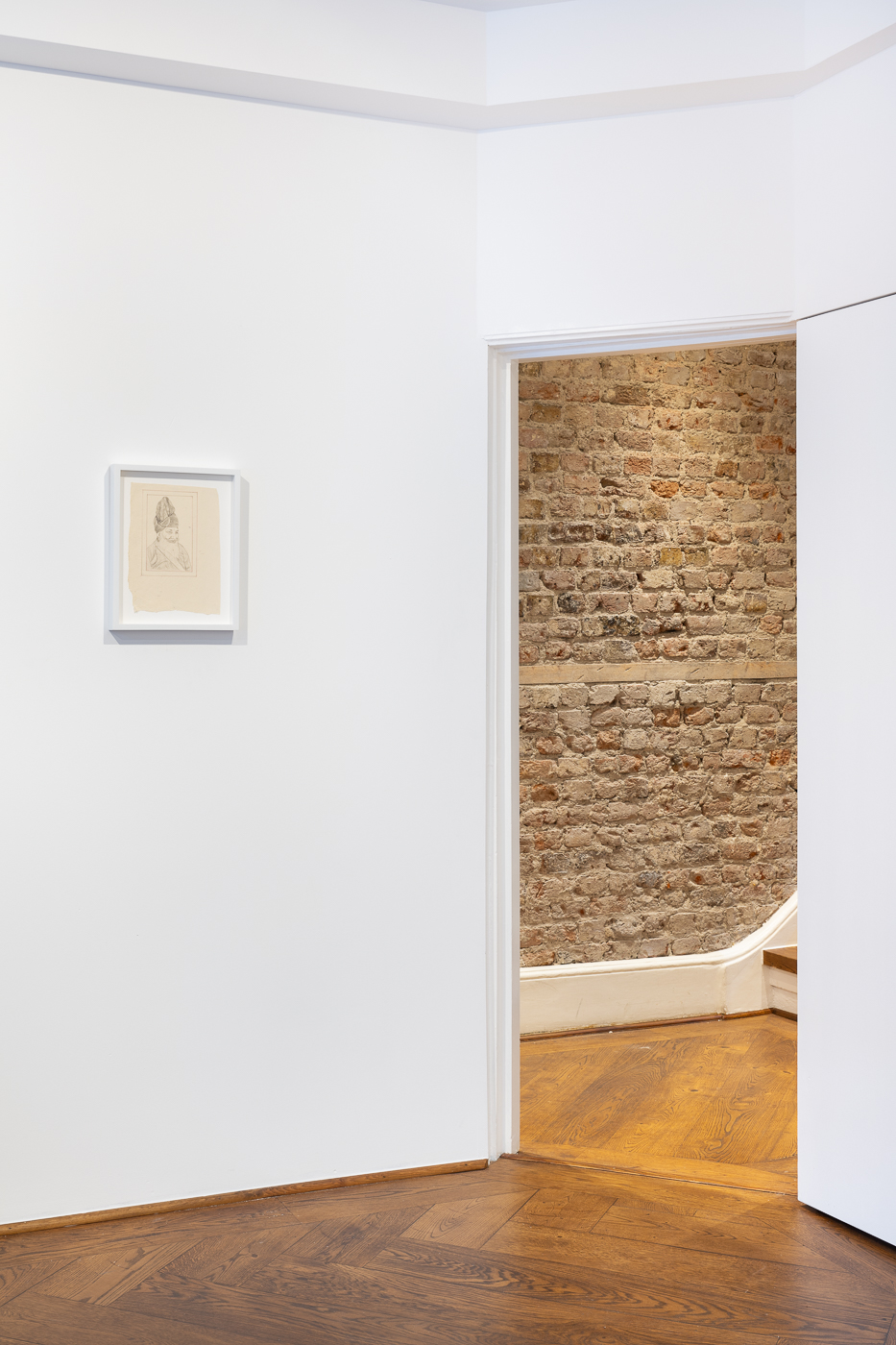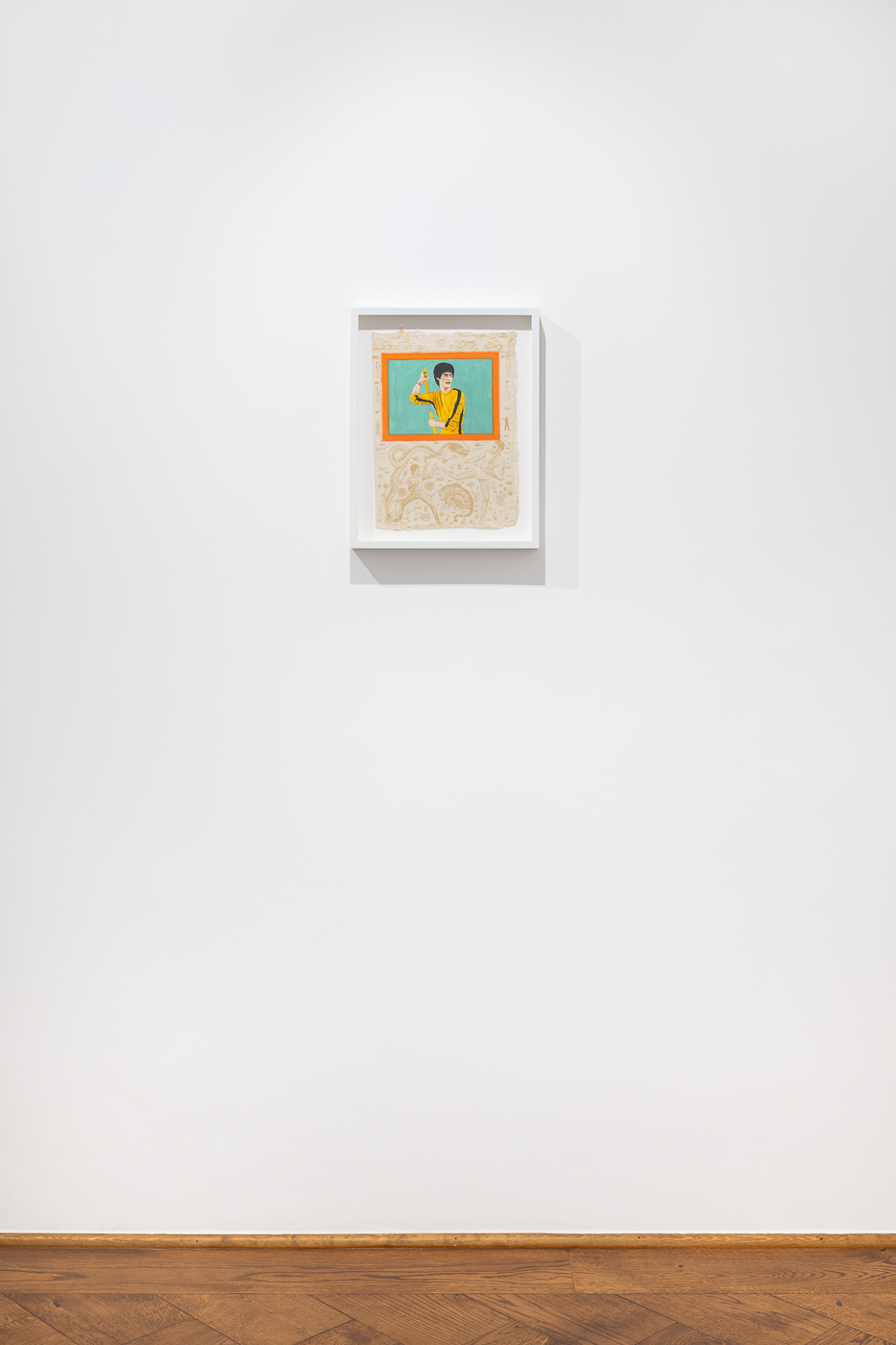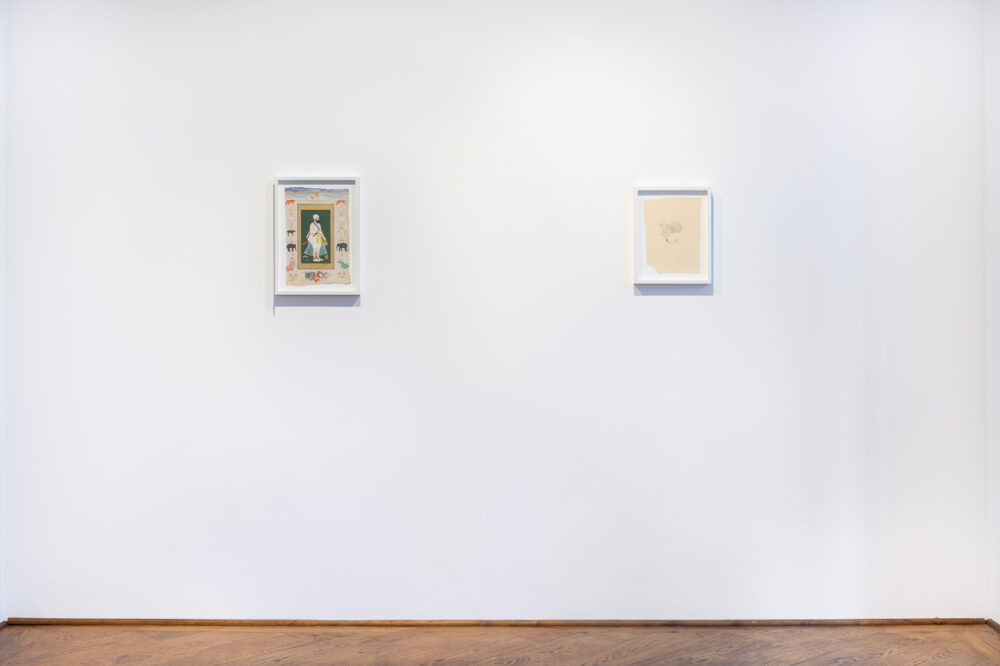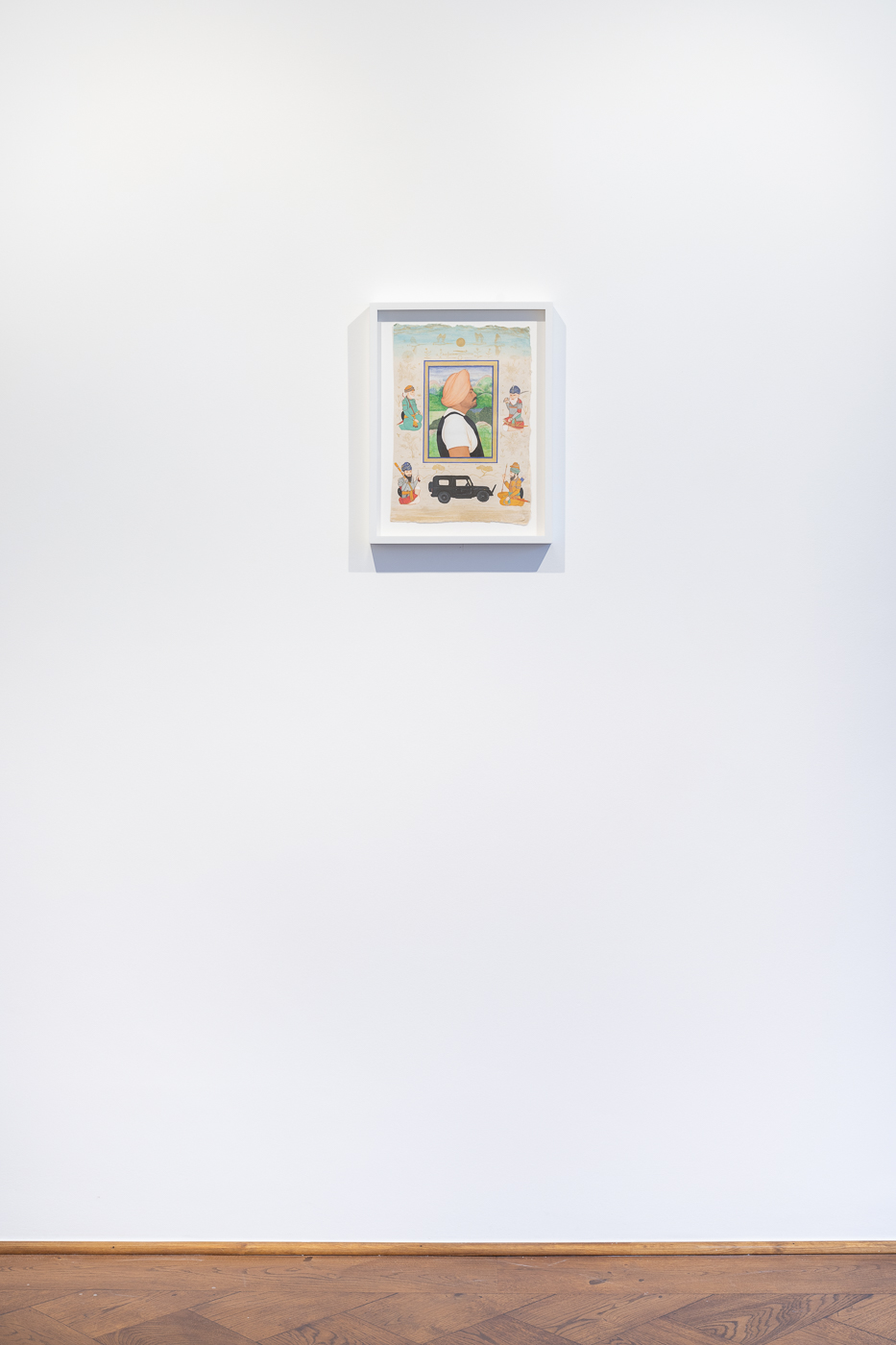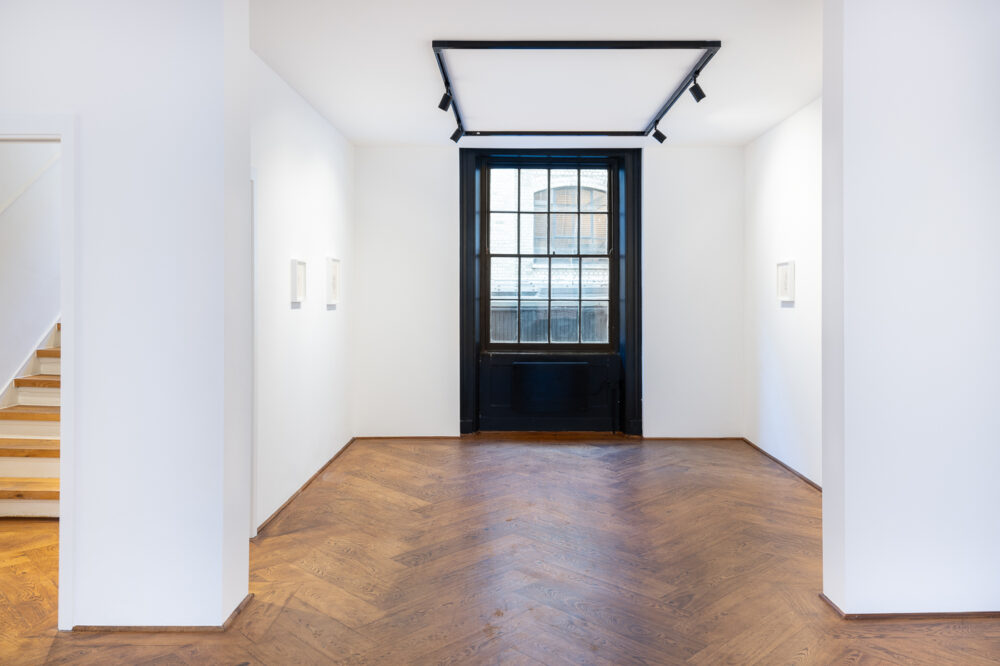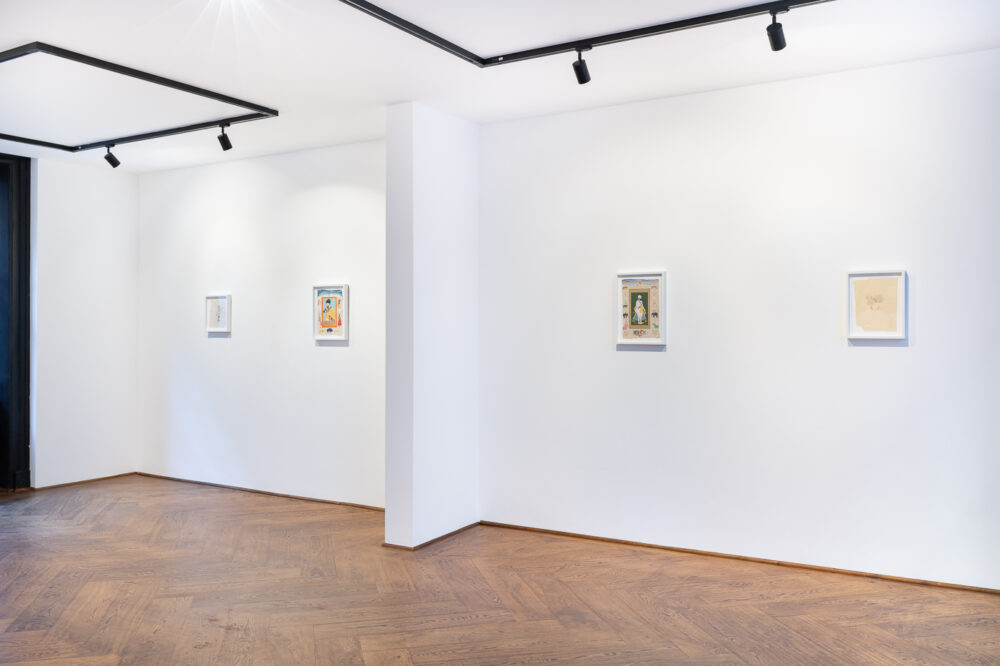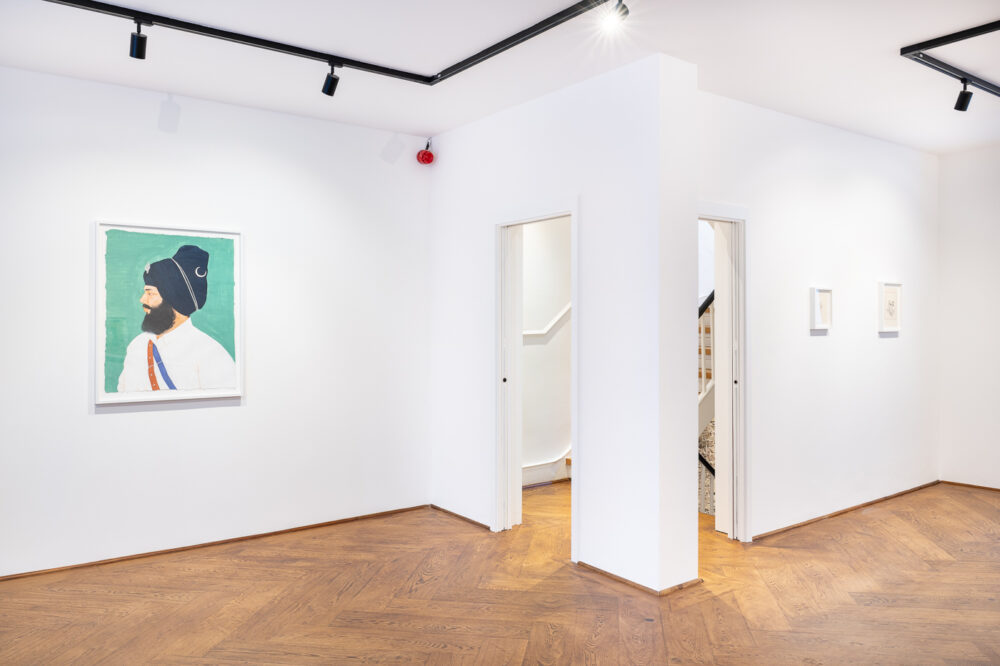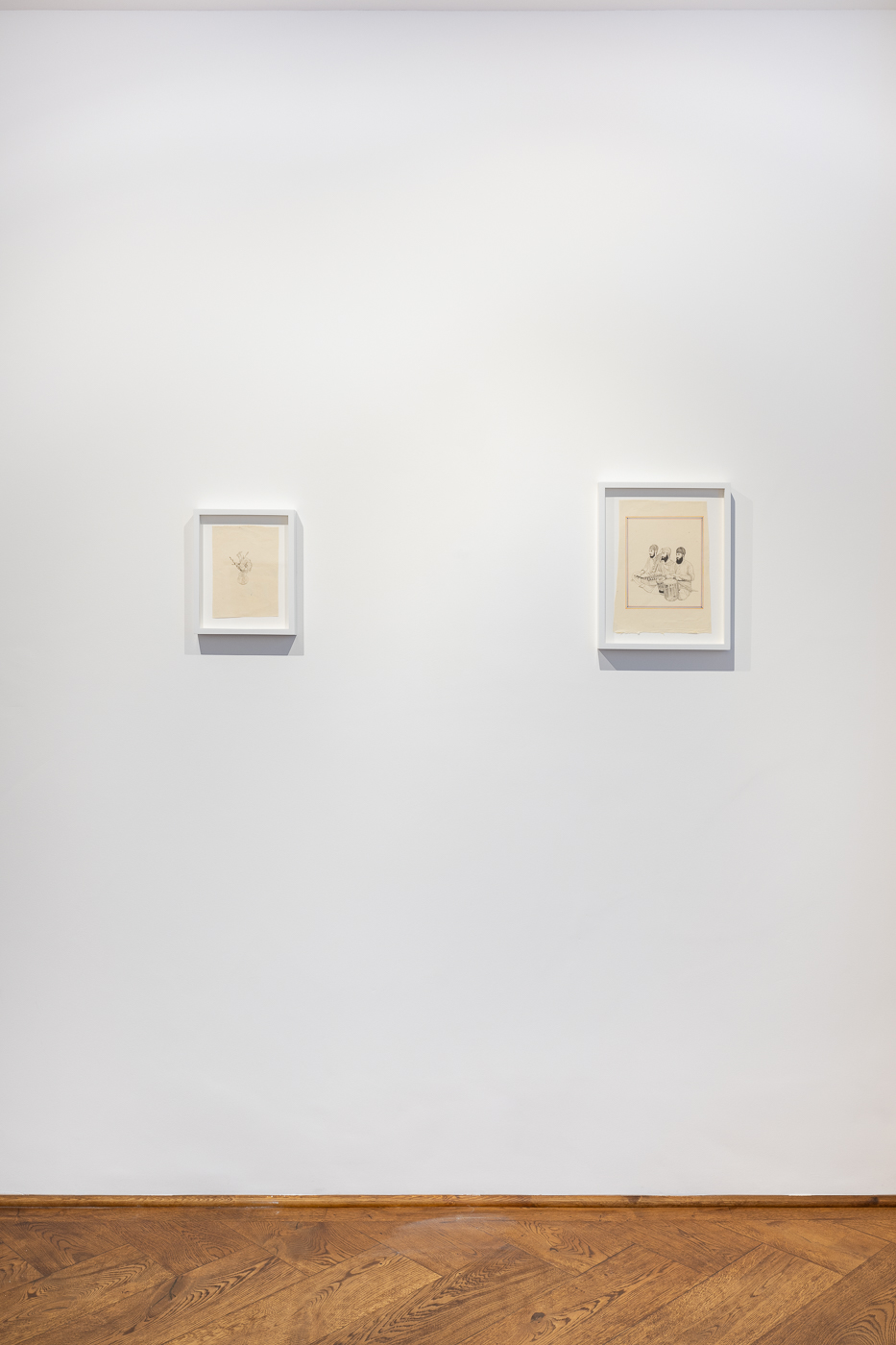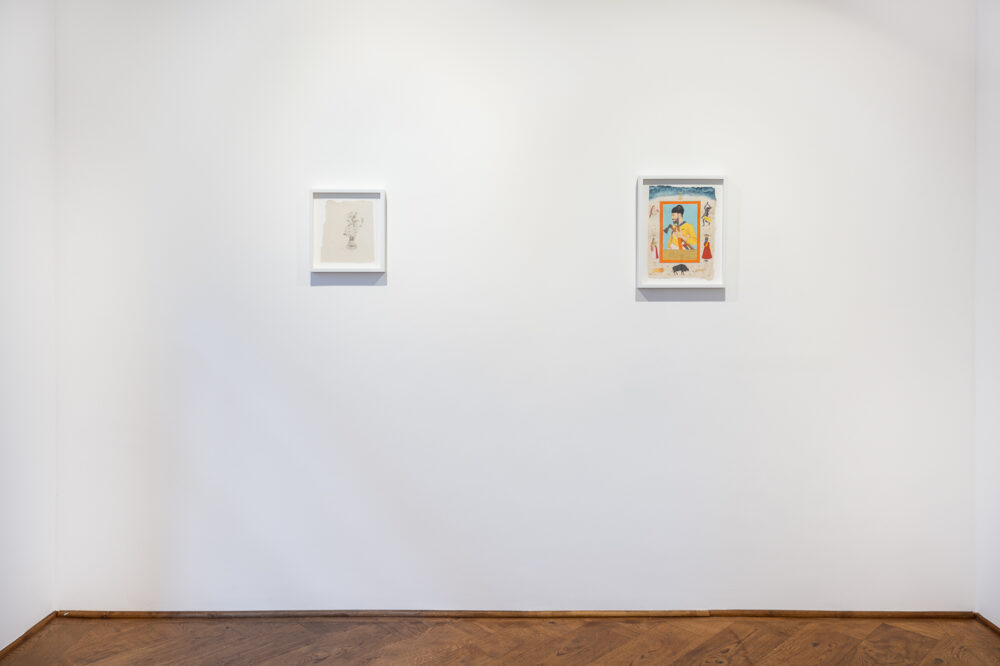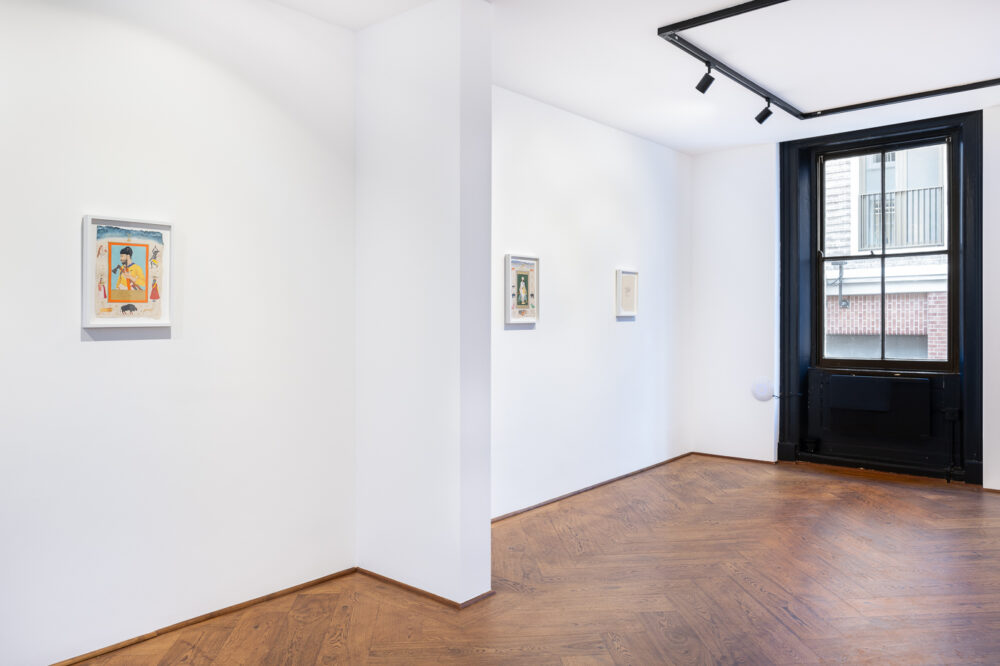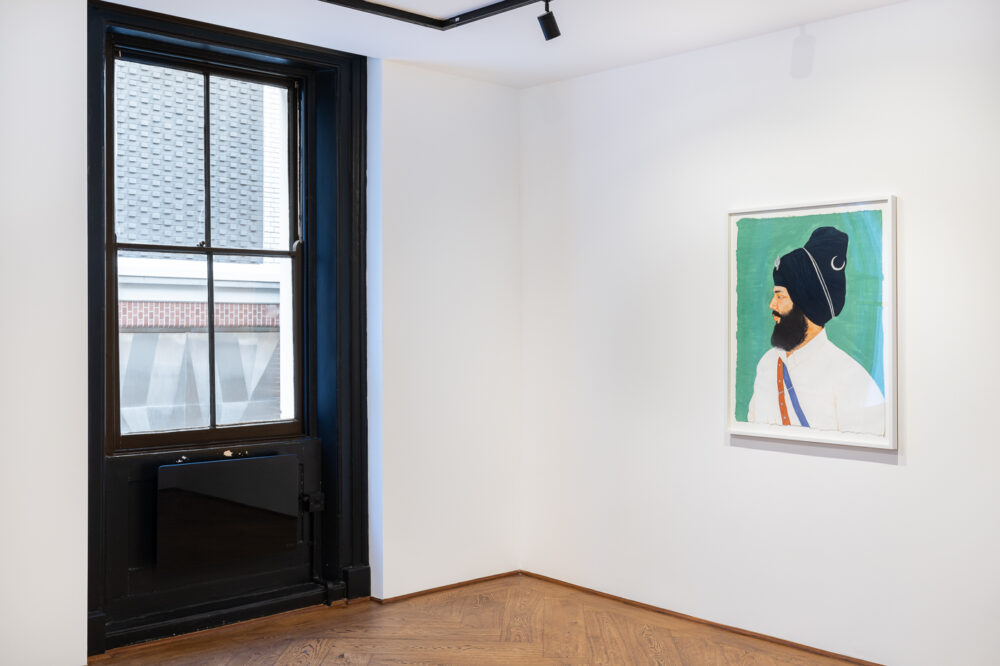The Artist Room presents Free Flowing Forms, a solo exhibition of works by Jatinder Singh Durhailay including new paintings and drawings on handmade wasli paper.
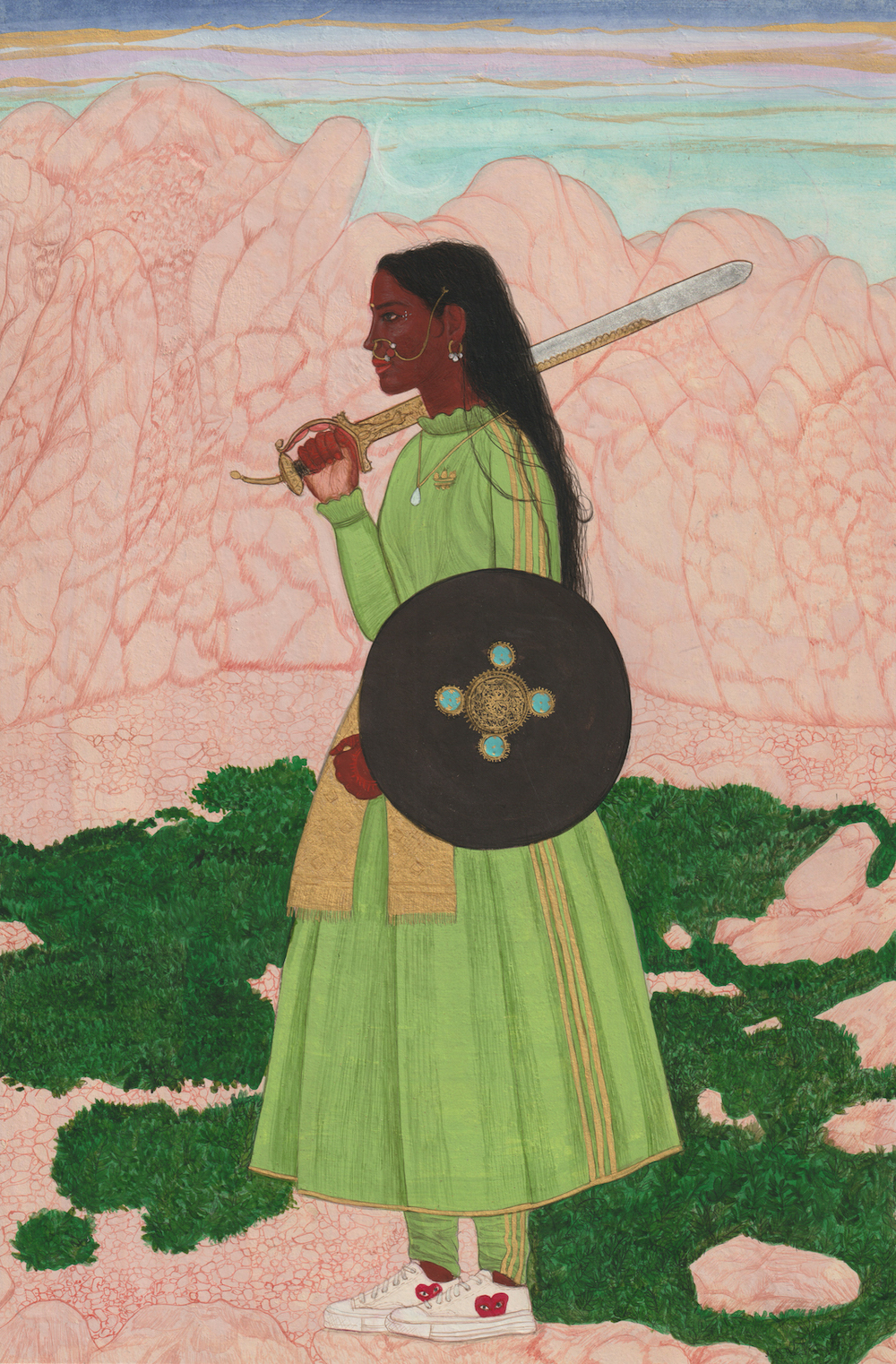
Jatinder Singh Durhailay: Free Flowing Forms
The Artist Room presents Free Flowing Forms, a solo exhibition of works by Jatinder Singh Durhailay including new paintings and drawings on handmade wasli paper.
Pictured: Jatinder Singh Durhailay, 'Durga', 2023. Natural stone pigment heightened with gold on handmade wasli paper, 27.9 x 18.2 cm, 11 x 7 1/8 ins.Jatinder’s paintings re-envision Indian miniature painting. In particular, they draw reference from paintings produced during the Mughal Empire (c.1526–1857). This was a complex period that saw industrialisation, urbanisation, scientific advancement as well as blossoming art and literature, yet it was not without religious and political turbulence. It was a time where trade and economy flourished in India and was ultimately concluded when the country was colonised.
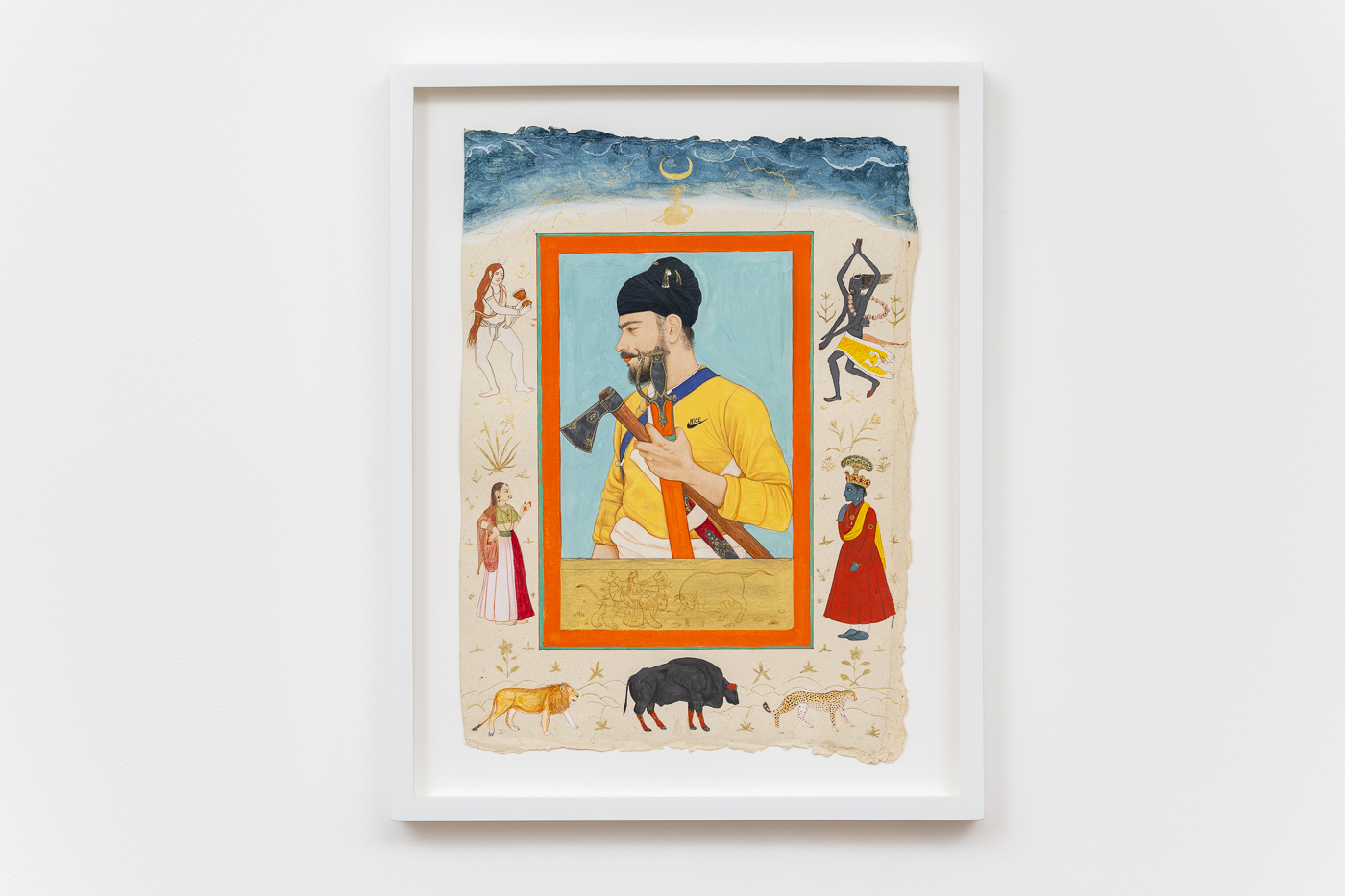
Jatinder Singh Durhailay, Jodha, 2023
Natural stone pigment heightened with gold on handmade wasli paper, 34.4 x 25.2 cm, 13 1/2 x 9 7/8 ins
The Mughal period is characterised by the development of distinctively opulent aesthetics including revolutionary architecture and extravagant gardens. This era also saw a revolution in native miniature painting as artists synthesised traditional and historical styles with Persian and European aesthetics as the world became increasingly globalised.
Mughal paintings depict populated scenes: the interiors of temples, groups hunting with animals and portraits of noble figures, among them. Often including decorative and embellished borders, they are characterised by their intimate scale. Colour and precise detail are prioritised over accurate geometric perspective. As the Mughal miniature form developed, it was one of the first types of art in which Indian artists developed recognisable – and sometimes playful – signatures and styles that viewers could recognise from painting to painting (and Jatinder’s works are no different).
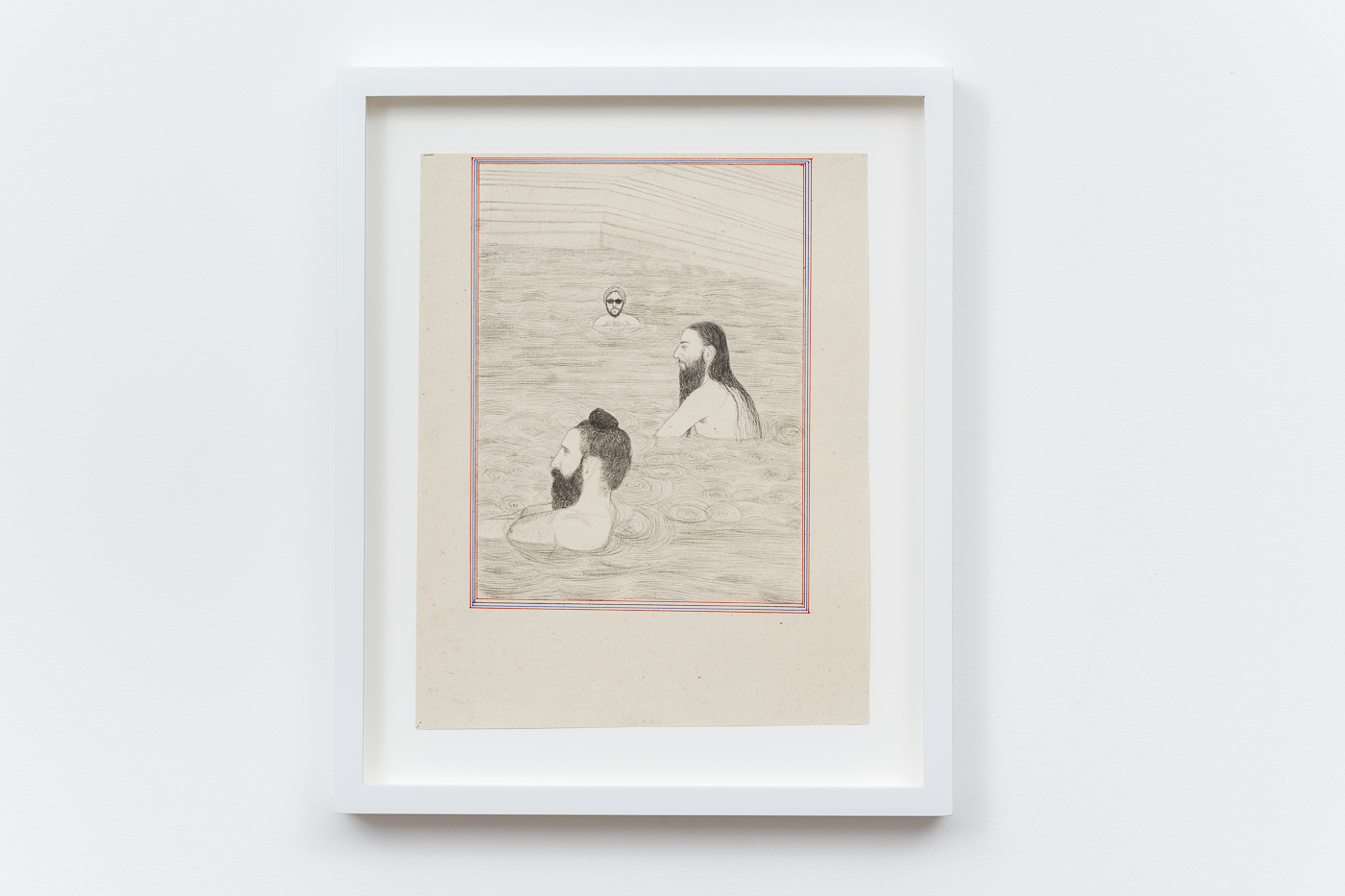
Jatinder Singh Durhailay, The boys in Ram sarovar, 2023
Watercolour on handmade hemp paper, 26.3 x 20.8 cm, 10 3/8 x 8 1/4 ins
But what drew Jatinder to Mughal miniatures, and inspired him to teach himself to work and reinvent this longstanding, technically deft tradition, were visits to the Victoria & Albert Museum in London as a child. Here, he vividly saw the representation of Sikh Indian Culture. Recognisable faces were reflected in the works, much like those in European realist portraits (Rembrandt, for instance); and the subjects in the paintings Jatinder admires hold agency, power and humility.
This might explain why Jatinder’s work carries a particular kind of authority, like history in the making. For instance, Baba Ji drinking coffee (2023) depicts Baba Joginder Singh, the head of a warrior faction of Sikhs called the Nihangs, enjoying a coffee whilst served by two attendants. The historical reference conveys a familiarity that is hard to put one’s finger on. Works such as this carry a familiarity as if they were held in the permanent collections of Victoria & Albert or the Metropolitan Museum of Art.
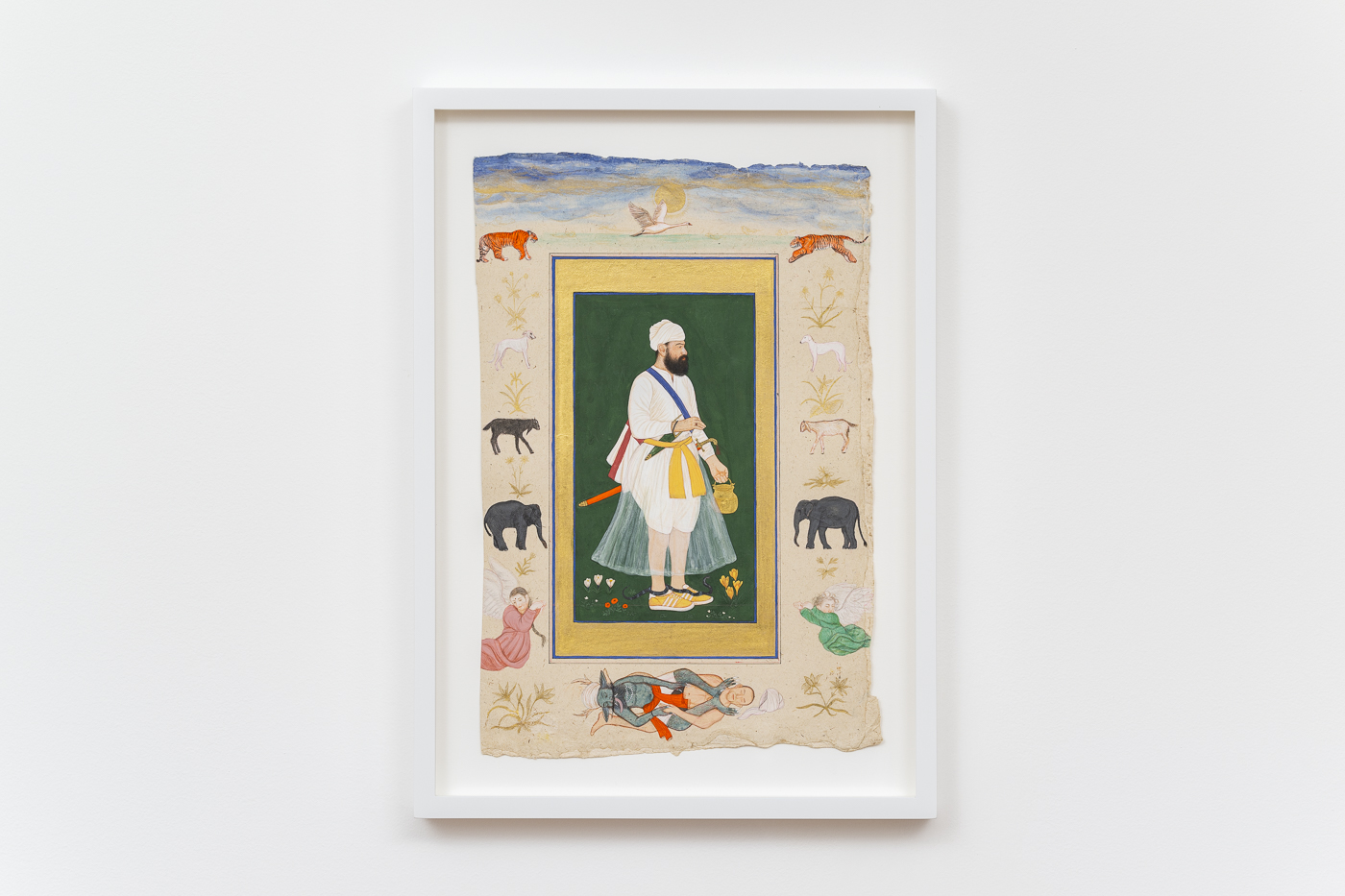
Jatinder Singh Durhailay, The man in a silk robe, 2023
Natural stone pigment heightened with gold on handmade wasli paper, – 36 x 24 cm, 14 1/8 x 9 1/2 ins
Noticing the meticulous level of detail in Jatinder’s work is often one of the viewer’s first responses. Jatinder works using a brush sourced from Rajasthan. The minute size of the brush means that each work takes a substantial amount of time to complete – often months. However, it is this slow meditative process that Jatinder enjoys. Many ofthe works utilise natural stone pigments imported from Rajasthan as well as precious materials like gold leaf, such as The Man in a Silk Robe (2023). These concentrated colours and reflective materials mean that photographs can never convey their jewel-like quality as they shimmer in the light. Other works, including sketches like Flowers at Home (2023), have frayed edges and look like they are from a past age as if torn from an excavated sketchbook.
Differently, where Jatinder’s oeuvre stands unique, is that other works clearly demarcate the present. Durga (2023), a portrait of Goddess Durga (a fierce warrior goddess and protector of all human beings) shows her standing confidently with a traditional Sikh sword and shield. And yet, closer inspection reveals a pair of Comme des Garçons trainers with their signature heart. While in Jodha (2023) the Nike tick appears on an axe and knife-wielding Sikh warrior’s top. In this painting, Durhailay uses a framing device where the border becomes its own story – a painting within a painting – where ancient Gods and Goddesses, Shiva and Krishna, Kali and Radha, are populated alongside animals, prey and predators to represent a circle of karma – life, death and rebirth.
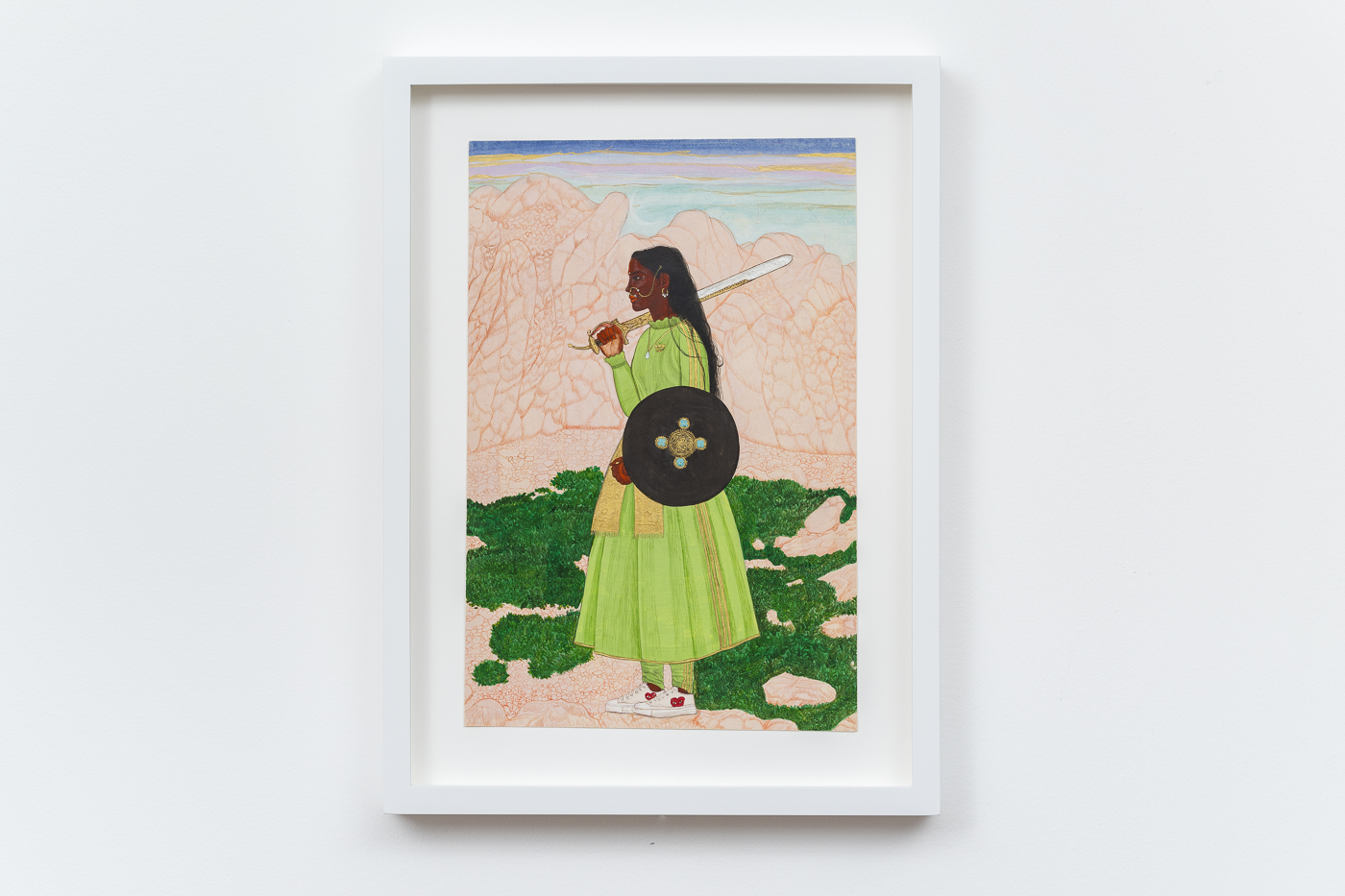
Jatinder Singh Durhailay, Durga, 2023
Natural stone pigment heightened with gold and silver on handmade wasli paper, 27.9 x 18.2 cm, 11 x 7 1/8 ins
In conversations together, Jatinder has spoken about the origin of his work more broadly. “I have always seen creativity as being related to spirituality. I remember my grandmother tenderly narrating stories (Sakhia) to us as children – I would tirelessly draw the characters, thus I always had a way of keeping my heroes close to me,” he once said. Honouring his heroes was a key aspiration for his previous exhibition at The Artist Room where among portraits of Gurus and prophets were portraits of his music teachers and close friends swimming under moonlight on a trip to India.
Symbolic in many ways, flowers have remained a constant source of inspiration for artists across time; from the blossoming 16th Century still lives of Clara Peeters to the mechanical screenprints of Warhol. For Jatinder, there is a more personal connection. Flowers are Jatinder and his wife Johanna’s way of life; not just a subject plucked from the canon of Western art history. They grow an allotment together, cultivating fruits, vegetables and flowers from the earth – which appear in sketches like Flowers in Glass (2023).
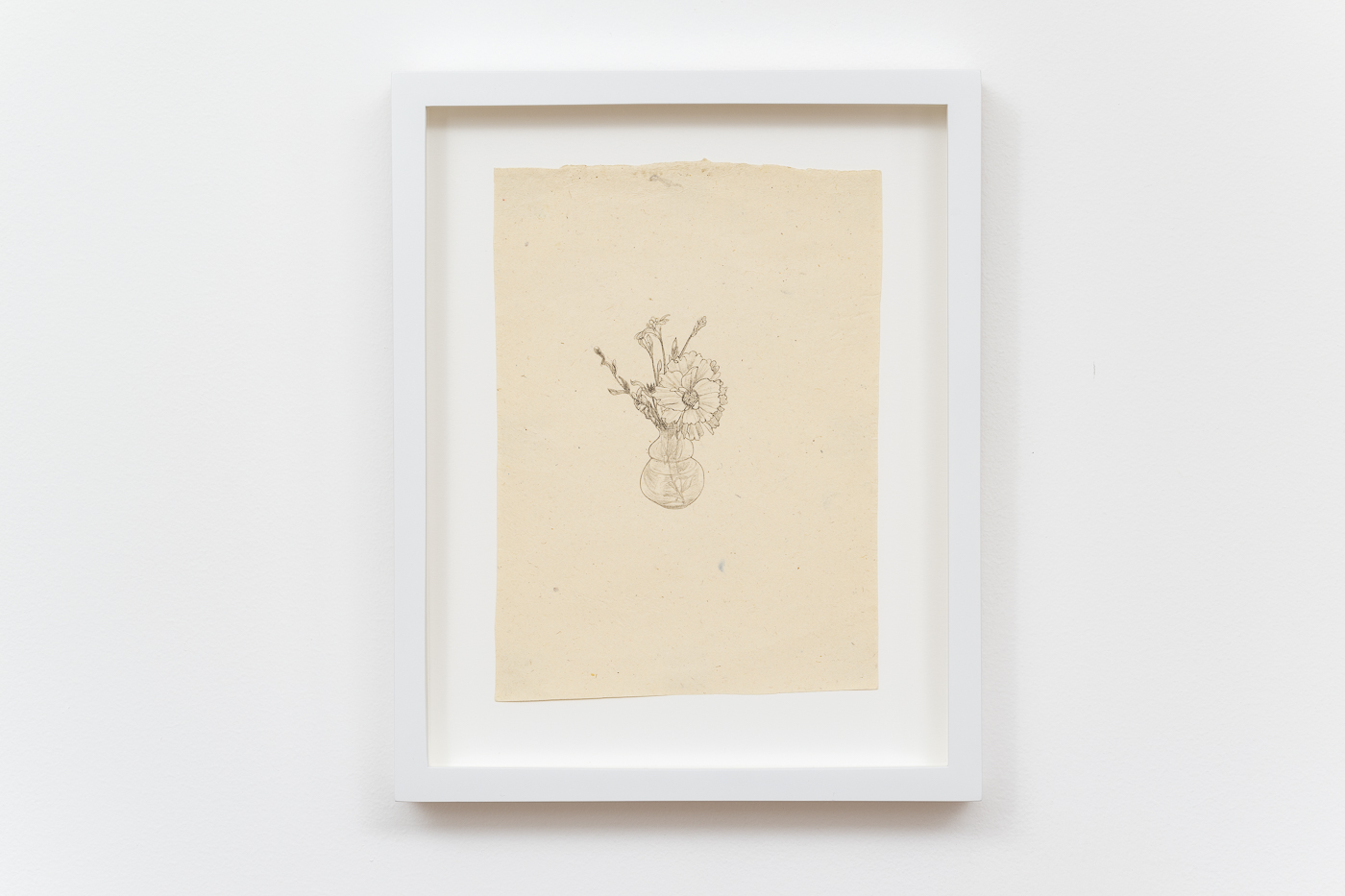
Jatinder Singh Durhailay, Flowers in glass vase, 2023
Watercolour on handmade hemp paper, 21 x 15 cm, 8 1/4 x 5 7/8 ins
This process mirrors their practical embrace of Sikh philosophy – being attuned to careful living without being moralistic. The Mughal period is known and celebrated today for its exquisite and abundant gardens. It is clear that for Jatinder, cultivating flowers and plants is a way to connect with his identity and cultural roots. He pays careful attention to the arrangement of colours and forms to best find beauty and evoke feeling. Beyond that, making is a way to root himself in the everyday. — Laurie Barron
Join The Artist Room
Stay up to date with the latest news from The Artist Room.
For information about how we manage your personal data, please read our Privacy Policy. You may withdraw consent at any time, all communications from The Artist Room contain an unsubscribe link.
For information about how we manage your personal data, please read our Privacy Policy. You may withdraw consent at any time, all communications from The Artist Room contain an unsubscribe link.
For information about how we manage your personal data, please read our Privacy Policy. You may withdraw consent at any time, all communications from The Artist Room contain an unsubscribe link.
For information about how we manage your personal data, please read our Privacy Policy. You may withdraw consent at any time, all communications from The Artist Room contain an unsubscribe link.
For information about how we manage your personal data, please read our Privacy Policy. You may withdraw consent at any time, all communications from The Artist Room contain an unsubscribe link.
